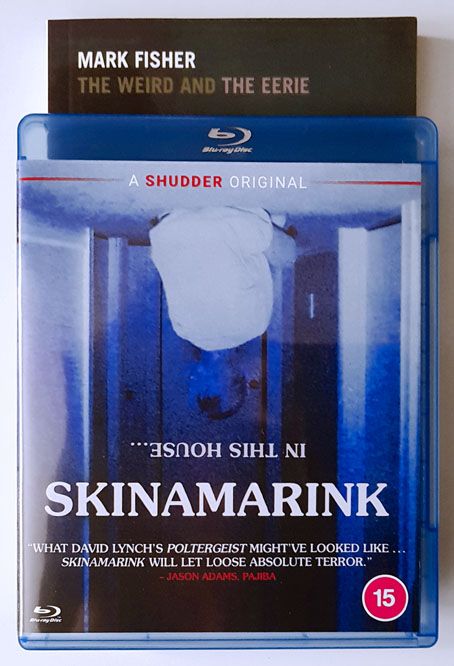
The feeling of the eerie is very different from that of the weird. The simplest way to get to this difference is by thinking about the (highly metaphysically freighted) opposition—perhaps it is the most fundamental opposition of all—between presence and absence. As we have seen, the weird is constituted by a presence—the presence of that which does not belong. In some cases of the weird (those with which Lovecraft was obsessed) the weird is marked by an exorbitant presence, a teeming which exceeds our capacity to represent it. The eerie, by contrast, is constituted by a failure of absence or by a failure of presence. The sensation of the eerie occurs either when there is something present where there should be nothing, or [if] there is nothing present when there should be something.
Mark Fisher, The Weird and the Eerie (2016)
The blurb on the box draws a comparison with David Lynch but I’d say Kyle Edward Ball’s film is closer to a collaboration between Robert Bresson and Mark Snow. More like this, please.
Previously on { feuilleton }
• Wavelength

I shall give this a chance as you often recommend films that I already own and love, but the trailer has not really convinced me.
The first 20 minutes of Skinamarink, I was very much happily thinking, “More like this, please!” It did things that are familiar in the experimental and underground cinemas, but was begging to burst through in a work of this magnitude.
By the 45 minute mark, however, I was done.
By the 80 minute mark, I was angry.
By the time the movie ended, I was grieving a lost opportunity.
Of particular importance to me was that the film decay was so obviously looped and fake. The whole idea is how shadows move and transform in ways that cause you to force them into shapes and narratives. He could have done that by using an era-appropriate tool like a Hi8 camcorder or Super8 film, without raising the costs of production that much. Then the footage would have truly warped around negative space. It annoyed me seeing the edges of the loop and that damned thumbprint every minute.
Secondly, I am okay with anti narrative but you need progression. “Narratively” this movie was a 20 minute short, tops. Experientially I could argue for it getting to 80mins, at a stretch. Personally I think the movie should have been 68-72 minutes long. I know that number sounds arbitrary but it comes out of my experience with these types of media. This movie crossed the threshold from asking for a patient audience, to complete disregard. The additional length added nothing.
In 2017 a Welsh filmmaker named Scott Barley released a movie called Sleep Has Her House, which I think did everything Skinamarink was trying to do and more. The movie describes an abyss that your brain fills with it’s own hauntings. The major difference is that Barley’s house is one of nature, Ball’s is domestic and nostalgic.
I want more movies like Skinamarink to be made, I just can’t recommend it itself.
Yes, I felt the fake scratches were unwarranted, as was the widescreen; and it ought to have ended with the penultimate caption and the extended shot of the hallway… But I’ll often forgive flaws if you’re getting so much else that you wouldn’t get from mainstream cinema, especially if it’s aimed at a general audience. I’m the same with Inland Empire: I really wish he’d used proper cameras instead of a cheap camcorder but it’s still an extraordinary film.